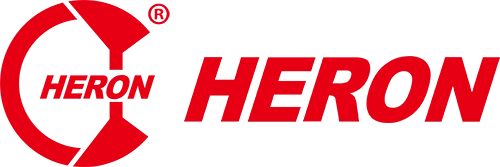Achieve Fastener Precision and Strength with a Stud Welder: Technology, Uses & Problem-Solving

Efficient, secure fastening is the backbone of today’s automotive, electronics, appliance, and construction sectors. The stud welder delivers rapid, high-strength joining for nuts, bolts, and threaded fasteners—enabling manufacturers to attach components in milliseconds, with minimal heat impact and outstanding reliability.
What Is a Stud Welder? Technology Overview
A stud welder uses electrical discharge—commonly capacitor discharge or projection welding—to fuse metal studs onto a parent material. Heron’s advanced machines focus electrical energy at the weld site, forming a secure, flush joint in one automated step—perfect for thin, coated, and delicate metals.
Key Features:
-
Ultra-fast weld cycles for maximum throughput
-
Minimal heat input, preserving base material strength and finish
-
Automated feeding and placement for high-volume lines
-
Programmable settings for various part sizes, shapes, and metal stacks
-
Compatibility with PLCs, robotics, and smart factory integration
Industrial Applications for Stud Welders
-
Automotive: Attaching studs, nuts, and threaded fasteners to chassis, battery packs, crash management, and EV parts
-
Appliances & Electronics: Joining mounting brackets, grounded terminals, panel connectors, and control box studs
-
Industrial Equipment & Construction: Securing fasteners in steel beams, HVAC components, and custom enclosures
-
Custom Fabrication & Repairs: Retrofit and prototyping work in job shops and contract plants
Stud welding is ideal for creating flush, high-strength connections where aesthetics, durability, and speed matter most.
Benefits of Heron’s Advanced Stud Welders
-
Flawless appearance: Flush fastening with minimal surface impact, ideal for visible and painted parts
-
Energy and cost savings: Efficient capacitor discharge or projection technology minimizes power usage and consumables
-
Zero distortion: Low heat input maintains part integrity while reducing post-processing
-
Automation ready: Built for integration with robot cells, conveyors, and smart systems
-
Reliable productivity: Robust designs and quality monitoring keep downtime low, batch yields high
Troubleshooting & Best Practices
1. Weak Welds or Drop-Outs
-
Confirm proper stud type, material, and electrode selection
-
Calibrate weld energy, time, and pressure per material stack
-
Clean base material and electrodes frequently
2. Surface Damage or Distortion
-
Lower weld energy or pulse duration for thin or coated metals
-
Optimize fixture pressure to maintain uniform contact
3. Feed or Alignment Issues
-
Lubricate moving parts and check stud feeders regularly
-
Train operators on setup procedures and preventive maintenance
-
Inspect robotic programming and adjustments
4. Inconsistent Welds Across Batches
-
Standardize incoming material and job specs
-
Use Heron’s analytics and sensors to track, log, and tune process parameters
-
Replace worn electrodes and monitor tooling wear
Why Choose Heron’s Stud Welder?
Heron stud welders blend state-of-the-art capacitor discharge and projection welding technology with automation, diagnostics, and global support. Their systems simplify fastener joining, improve output, reduce costs, and adapt seamlessly to evolving production demands.
Conclusion: Fast, Strong, Automated Fastener Welding—Every Time
Upgrade your production line with Heron’s stud welder for flawless, rapid fastening and reliable joint quality in any sector.
Meta Description:
Achieve high-speed, flush, reliable fastener joining with a stud welder from Heron. Discover technology benefits, troubleshooting, and streamlined performance for automotive, electronics, and more.




